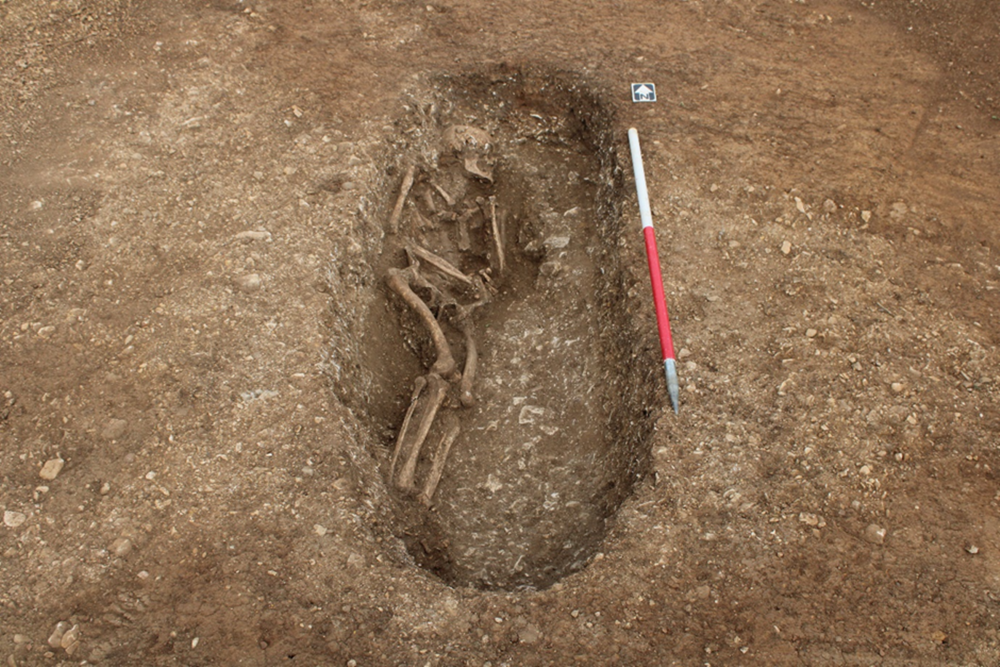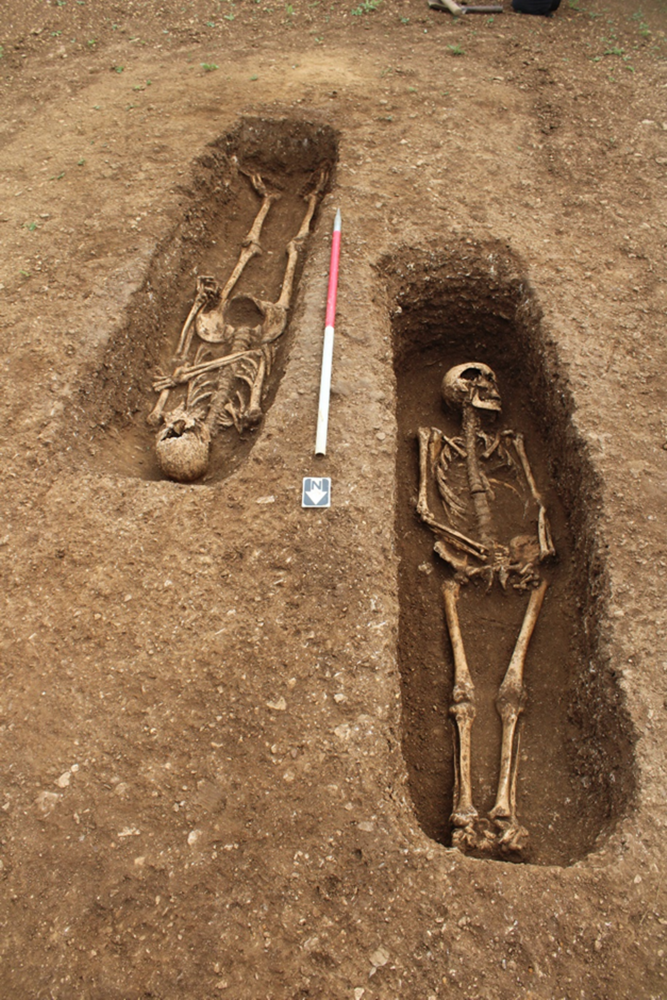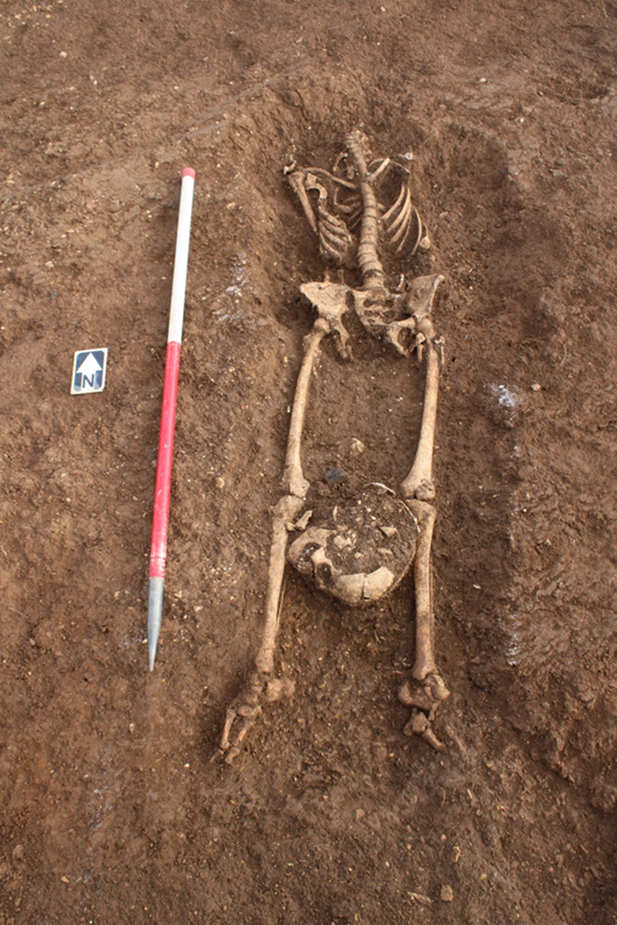Milestone Ground Broadway – Dig Diary 3
- 14th April 2025
Welcome back to our dig diary! In this instalment we will be looking at some of the burials found on site, including a cemetery located on the eastern side of the site.
Content Warning:
This blog post discusses archaeological burials, including human remains and funerary practices. If you prefer not to see the images of human remains, please do not click on the drop down boxes in the case study section.
Across the site we have found burials dating from different eras, stretching back to the Early Bronze Age. However, early on during the excavation we began to uncover a number of burials concentrate around a large D-shaped enclosure. It appears to have been reused as a burial ground and contained over 70 graves. Early indications suggest that most burials are late Roman, which would make it the largest known late Roman cemetery in Worcestershire.
There were a range of burial practices during the Roman period, but variations between these burials is surprisingly wide. For example, the orientation of graves and positions people were laid in varies considerably. Graves also range wildly in depth, with some being extremely shallow (just below the modern topsoil) and others very deep. Why is there so much variation? Is it due to changing practices over time or different community customs?
Case studies
Click on each box below to explore three case studies – these highlight the range of burial practices and what they might tell us.
Fact file
Age: Adult
Orientation: North – South
Type: Lateral (lying on their side)
Notes: Leaning on left side up against edge of grave, leaving a large space to one side
Initial thoughts
While this person was buried in a large grave they were placed right up to the edge of it. What was this space left for?
Another similar grave on site had animal bones placed alongside the person, perhaps the remains of food. What else may have been in these graves that hasn’t survived? Hopefully further analysis will help answer this question.

Lateral burial at Milestone Ground, Broadway
Fact file
Age: Adults
Orientation: North – South and South – North
Type: Both supine (lying flat on back)
Initial thoughts
Both of these burials were within the cemetery area, yet they have been been laid in opposite directions. It is likely that both date from the later Roman period, so we would expect to see similar burial practices. However, there is not a huge amount of conformity across the cemetery.
There are two pairs of burials on site that lie next to each other but in opposite orientations. Was this deliberate?

‘Yin and yang’ burials at Milestone Ground, Broadway
Fact file
Age: Adult
Orientation: North – South
Type: Supine (lying flat on back)
Notes: Decapitation – head between legs
Initial thoughts
Decapitation is seen in around 1 in 10 burials from Roman Britain. It is hard today to understand why this was done, but in most cases the head was removed post-mortem (after death). Here, at Milestone Ground, five graves with this burial practice have so far been found, all within the main cemetery. One even had a bone comb placed under their feet.

Example of a decapitated burial at Milestone Ground, Broadway
Archaeologists carefully record and lift each grave, making sure that a thorough record is created via photographs, scale drawings and written descriptions. Any additional details are also recorded, such as grave goods, which might help us learn more about the individual.
Below is a example of how burials are recorded. Click on the + buttons to find out more.
So what happens next?
Once burials have been recorded and carefully excavated, they are taken back to the office. They will then be examined by an osteoarchaeologist (human bone specialist). who can often determine a person’s approximate age, biological sex and any physical injuries.
Human remains can also tell us about the health, lifestyle and diet of those who lived here long ago. it may also be possible to investigate genetic relationships and the movement of people by analysing chemical signatures in bones and teeth.
Due to the large number of burials, we will hopefully be able to ask wider questions, as well as discovering individual’s stories. For example, were people buried in family groups? Did some individuals have special treatment in death, hinting at status or belief? These details will help to build a broader picture of the community and times that they lived in.
Worcestershire Archaeology are undertaking the excavation on behalf of Wychavon District Council and information is shared with their kind permission.
Post a Comment